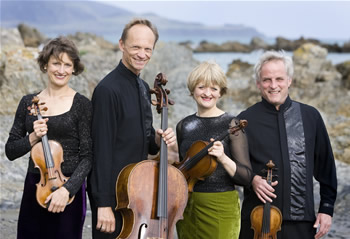Fantaisie; François Borne: Fantaisie brillante on Themes from Bizet’s Carmen; Albert Franz Doppler: Fantaisie pastorale hongroise; Gabriel Fauré: Fantaisie, Op. 79; Phillippe Gaubert: Fantaisie; Geroges Hüe: Fantaisie; Paul Taffanel: Fantaisie on Theme’s from Weber’s Der Freischütz. Mathieu Dufour, flute, & Kuang-Hao Huang, piano; Çedille CDR 90000 121, ©2010, TT 57:00, $15.00.
Dufour is the principal flutist of the Chicago Symphony Orchestra, having been appointed to the post by Daniel Barenboim in 1999 at the age of 25, among the youngest ever to hold such a position, and, as you might suspect, is French, a native of Paris. He was previously, at age 23, the principal flutist of the Paris National Opera and, at age 20, of the Orchestre National du Capitole de Toulouse. He is also on the faculty of DePaul University in Chicago. Huang, a native of Wisconsin, is currently on the faculties of the Chicago College of Performing Arts of Roosevelt University (in whose resonant Ganz Hall the recording was made), Concordia University, and the Merit School of Music. He has performed premières of several works by living composers in New York and Chicago.
Dufour has compiled an interesting and well-balanced program (listed above in alphabetical, not playing order) of both popular and rarely heard mostly French works in the same general form and with the common title which is that of the CD. It divides into two halves: the first three are works created expressly for the flute ‘Concours’ of the Paris Conservatoire; the next one is based on folk or popular tunes, and the final two are based on themes from popular operas, a form invented by Liszt for the piano, which instrument plays a role far greater than mere accompaniment in the Taffanel. It is conceived to build to the climax of Borne’s well-known showpiece.
A ‘fantasia’ is a somewhat loosely shaped work, in which form or structure is of secondary importance, imaginative and free-flowing, that often feels like an improvisation, where one melody or theme blends or flows into another. There is a considerable variety among these six examples. Some have softer and more contemplative moments while others are more brilliant and showy. The three ‘concours’ works are deliberately designed to challenge the player and offer an opportunity for the display of virtuosity; both brilliant and discreet. The three based on existing, often familiar tunes seek to organize, combine, and utilize them in a creative and sometimes bravura way. The program notes suggest that the Taffanel might well serve as an alternative overture for the Weber opera.
Four of the composers were themselves flutists. Borne taught at the Toulouse Conservatoire, played flute in the theatre orchestra of Bordeaux, and was also a flute builder; he is credited with several improvements in flute making. Doppler had a virtuoso career in Vienna, where he relocated from Budapest. Gaubert was known for brilliant playing in his performing days before he became director of the Paris Opera, and wrote many works for the instrument. Taffanel was not only a brilliant player but also the teacher at the Paris Conservatoire of many flutists in subsequent generations, including Gaubert, who subsequently collaborated with him on a teaching manual.
The Fauré, dedicated to Taffanel, was written for the 1898 ‘concours,’ the Gaubert for 1920, and the Hüe for 1913. Fauré’s opens with a sort of Sicilienne – he was also working on that of Pelléas et Mélisande at the time – that harks back to the Baroque dance form, and becomes more intense in the second half. Gaubert’s, also constructed in two parts, slow and fast, is particularly demanding for its frequent dramatic dynamic and tempo changes. Hüe’s is reminiscent of Debussy’s sound world, and includes enormous internal variety in mood and expression. Both Fauré’s and Hüe’s exist in orchestrated versions.
The booklet contains fine program notes that include composer bios as well as comments on the works by Andrea Lamoreaux, music director of Chicago’s classical radio station WFMT. Credits are on the inside of the front cover that features a casual photo of Dufour. Track listings and timings are on the facing page. Performer bios follow the notes, with, curiously, Huang’s in a slightly smaller font and a blank page after them. A photo of the cover of Dufour’s other CD with a reviewer’s assessment is on the inside of the back cover, which features another photo of him, fittingly from behind.
Dufour gives us fine flute playing that easily places him in the company of the great and legendary masters of his instrument, such as his compatriot the late Jean-Pierre Rampal. He seems to achieve his results effortlessly, be it a soft, mellow or a bright, penetrating tone, a trill, a legato passage, or a brilliant blast, as called for by the score. This CD is a fine addition to a collection both for the repertoire and the performance.











